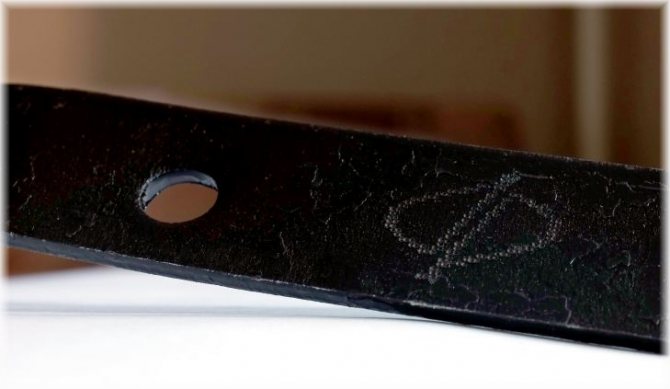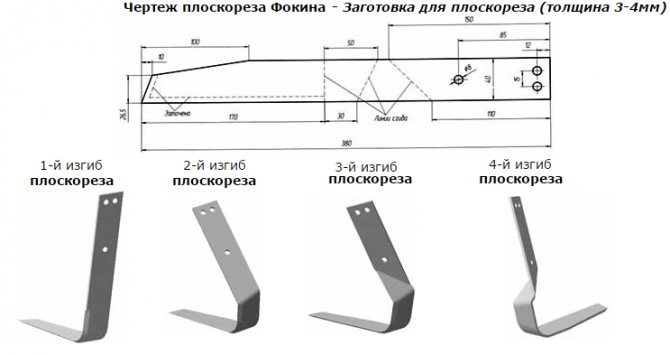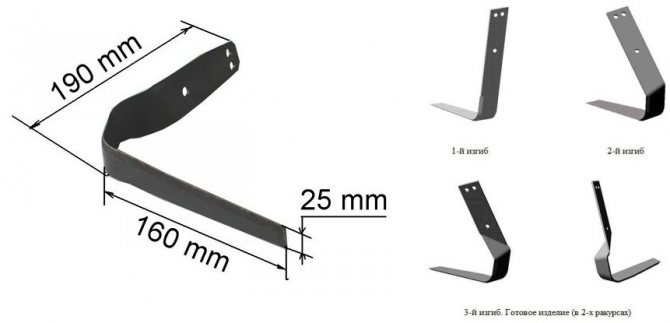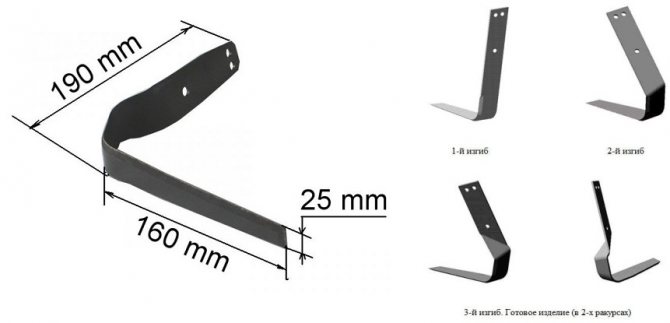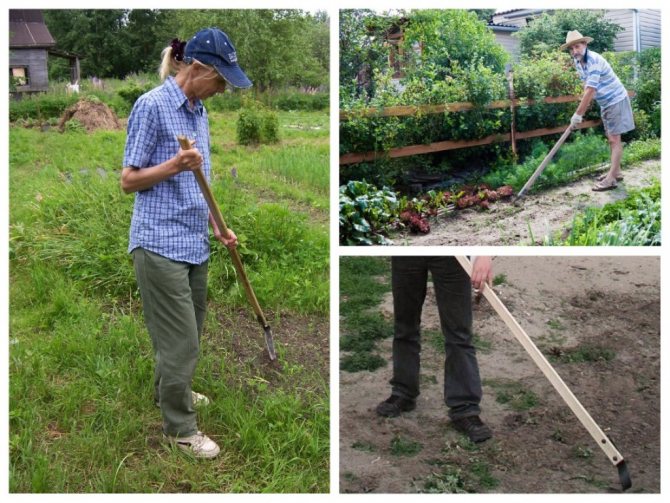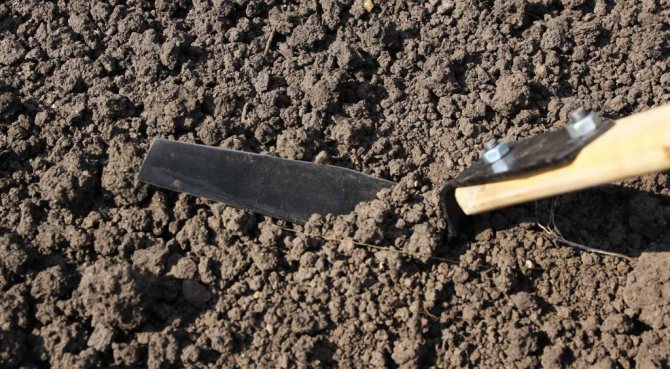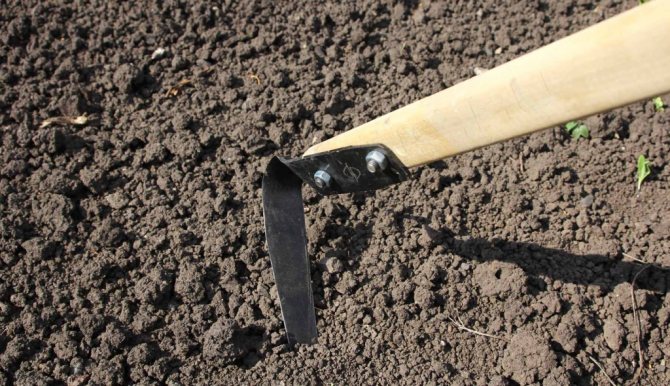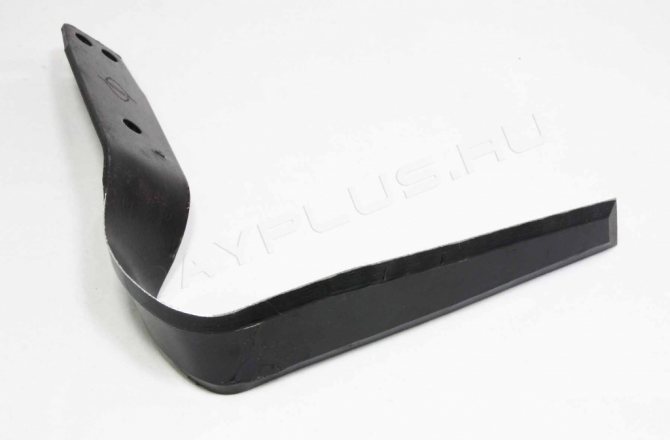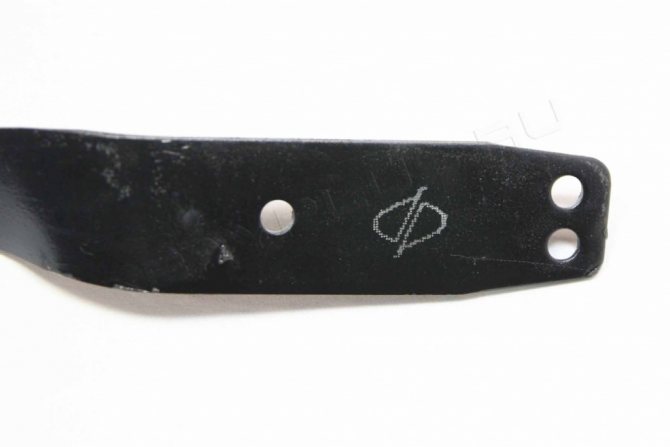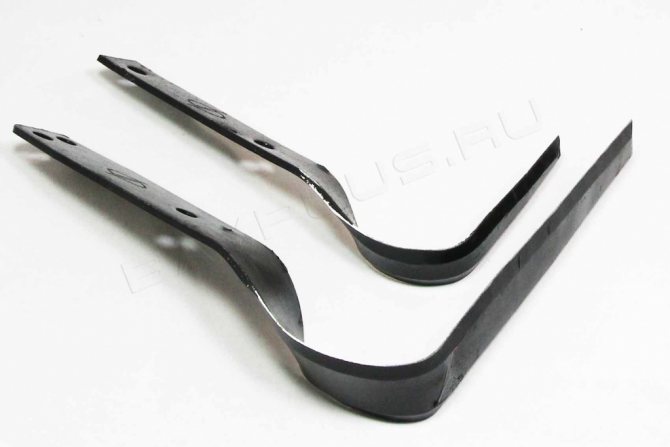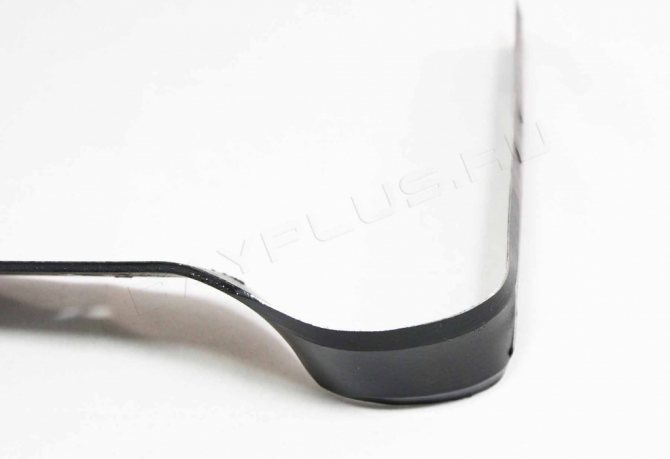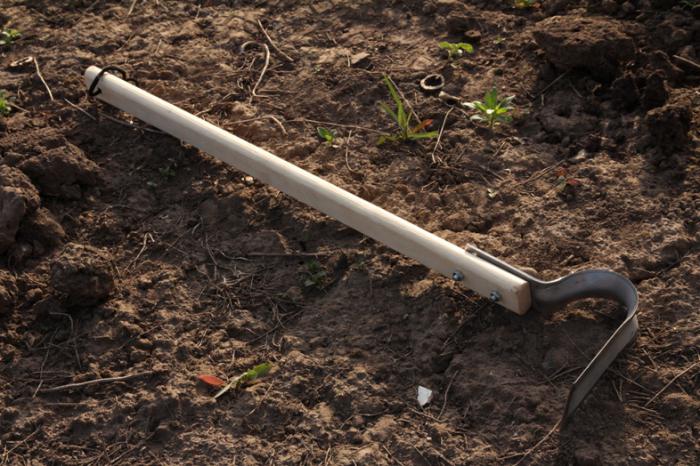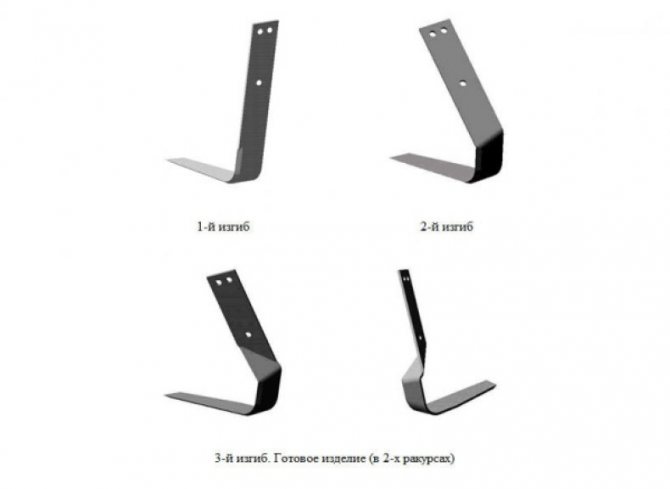Modern and high-quality summer cottage inventory allows us to optimize work as much as possible, reduce time spent on processing plots, and improve the convenience of our own work. Therefore, today we decided to study a practical and popular tool for a summer resident is the Fokin flat cutter.
Saving on garden tools and special inventory leads to a decrease in the quality of work, and therefore we believe that if there is the slightest opportunity to buy a really practical tool, then this must be done. We have used Fokin's flat cutter many times at our own dachas, and therefore today decided to tell a little about the advantages of this equipment. Let's hope that information from will be useful for you!
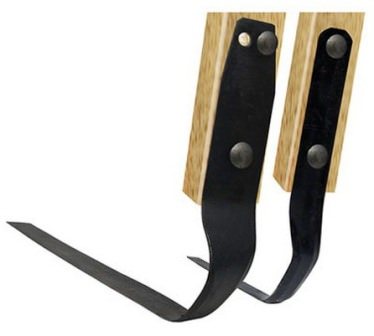
Design features
The flat cutter is a versatile device that can be used as a shovel, hoe, scythe, rake, hoe. With the help of a simple tool, many types of gardening work are performed. The development was based on the idea of weed control, which the flat cutter successfully copes with.
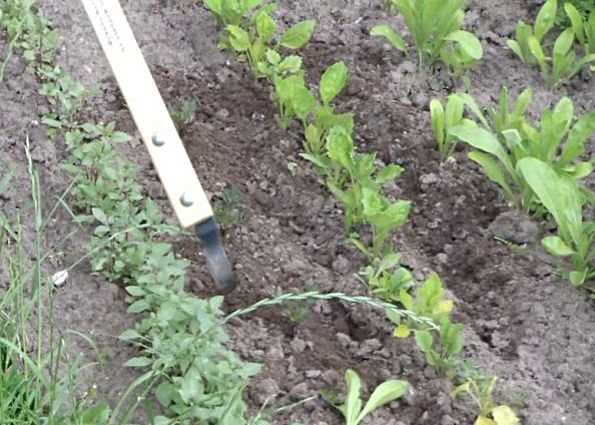

Fokine's invention is externally similar to a curved plate (tooth), which has a turning on three sides of the edge. The metal element is fixed to the holder made of wood with 2-3 fastening bolts. The blade is quite sharp, so it can easily be buried 3-5 cm into the ground with little effort, cutting off the root system of the weeds. At the same time, the structure of the soil is not disturbed, all beneficial microorganisms are preserved.
It is better to use a shank not of a round shape, but a flat one with rounded edges. This design will allow you to easily wield the device without leaving calluses on your hands.
Types of flat cutters and their application
The industrial production of flat cutters, which was launched at the end of the last century, will satisfy any need of a summer resident or gardener. Depending on what kind of work is planned, one of six models is selected.
All work in the garden and vegetable garden can be done with one of the ones on the list. But then the principle of using this tool will be violated - easily and efficiently.
A flat cutter will help, but on condition that each model will be used for its intended purpose.
- Small plane cutter - for working on light soil, when forming furrows and small beds, for sowing vegetable seeds, weeding and shallow loosening.
- Large - Formation of large ridges and seed furrows in heavy soils. Planting crops in seedlings. Loosening to a depth of more than ten centimeters. Formation of near-stem circles, the first hilling of plants in the early phases of growth.
- Small cloth - fast processing of narrow row spacings. The working part of the tool is narrow, sharply sharpened.
- Large cloth - a tool with a strong, sharp blade, for weeding crops that take up large areas.
- Mower - has the widest blade, convenient for hilling vegetable crops.
- Strong - wide but short blade allows for tilling heavy, stony soils.
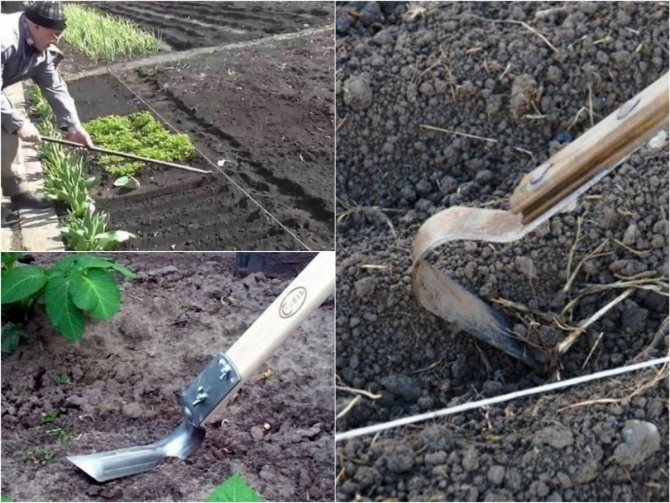

For processing one crop, in different phases of growth, it is possible to use different models. If, when planting carrot or beet seeds, the Small Plane Cutter is suitable, then in the future, for weeding and loosening the row spacing of the same crops, you will need a large or small cloth.
An important condition is the correct use of the tool. If some rules are not followed, working with a flat cutter will differ little from working with an ordinary hoe or hoe.
Points to consider:
- The stalk should be rectangular with rounded edges.
- The handle should "lie" in the hand. When gripping, fingers should "point" up. If the diameter of the shank is large, it will be difficult to work with such a tool.
- The length of the handle is matched to the person's height. A short handle will force you to work, tilting strongly, and a long one will not allow you to hold the tool at the required angle.
- The metal part is attached to the handle at an angle of 45 °. Industrial models have ready-made technical holes. It is important to take this point into account when making a flat cutter yourself.
- The tool must be well sharpened. It is easier to work with a sharp instrument.
The main principle is the horizontal direction of the tool movement at a given depth. At the same time, both rules will be observed: it will be easy to work, and the quality and speed of work will be high.
Original tool and fake
If we want the flat cutter to serve us for a long time, it is necessary to purchase the original, and not a fake. Unfortunately, everything that is popular and of high quality is quickly mastered by manufacturers who do not have patents or production rights, deviating from the author's technology. As a result, the tool does not work as it should, and it is quite difficult to maintain it.
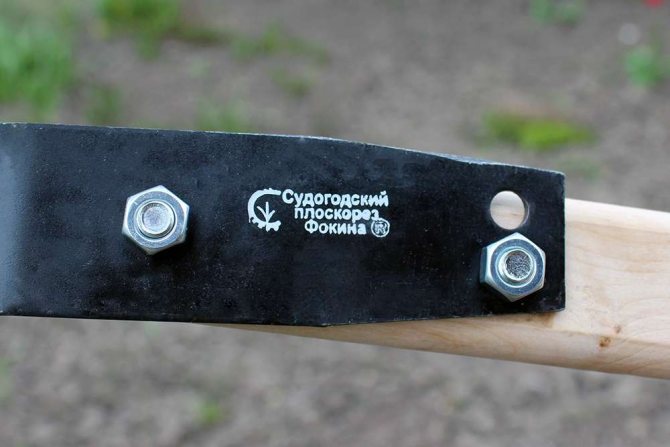

Factory stamp on Fokin's flat cutter
When buying a Fokin plane cutter, you need to know what features the original tool has:
- The number of original options - 6: large and small flat cutter, large and small blade, "Strong" and "Mighty", which is best used for solid soil. You can read more about the types of tools here.
- The original has a strong, sharp-edged blade, while low quality metal is often used in counterfeiting, and the blade can be easily bent by hand.
- Pliers are sold in pairs: small and large.
- The blades are packed in a special triangle-shaped packaging with the logo of the Organic Farming Club.
- The original set always comes with the author's brochure "To the Earth with Science"; when buying the original, the brochure should be printed in color, while together with the fake you may be offered a brochure in black and white, printed on poor quality paper.
- The delivery necessarily includes fasteners treated with an anti-corrosion compound.
- The original is never painted, it is always black, and the shaft must not be covered with paint either.
- The letter of the beginning of the surname of the author of this invention "F" or a sticker with the inscription "from Fokin" must be stuck on the blade.
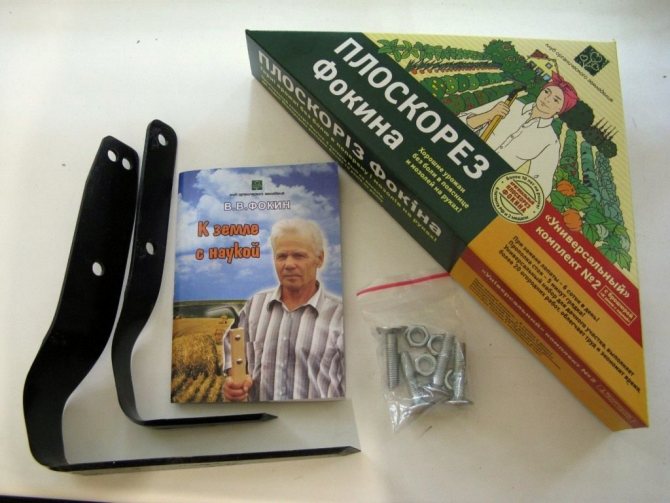

Completeness of the original Fokin plane cutter
Fokin's flat cutter how to work
It so happens that a gardener bought a flat cutter, but then complains about his purchase. The thing is that he does not know how to use it correctly. Yes, and no skills to work with the tool. Outwardly, the flat cutter resembles a hoe, but it works differently. The main purpose for which the tool is intended is tillage.
Loosen the soil
The first step in spring is to loosen the soil for sowing and planting. How can you loosen the ground with a tool? A little theory and practice will help you. We have already said that it does not turn the ground. You just need to bring the blade into the ground to a depth of 4-5 cm, and then draw a little parallel to the surface. It turns out that you kind of cut off the top layer. This is quite enough to fluff up the fertile part of the land. Then it will become suitable for sowing your plants. And by sharpening the blade on both sides, you can do the job in two directions. With practice, things will go quickly. Judging by the reviews, people cultivate 20 acres of land without any problems. It wouldn't work that way with a shovel.
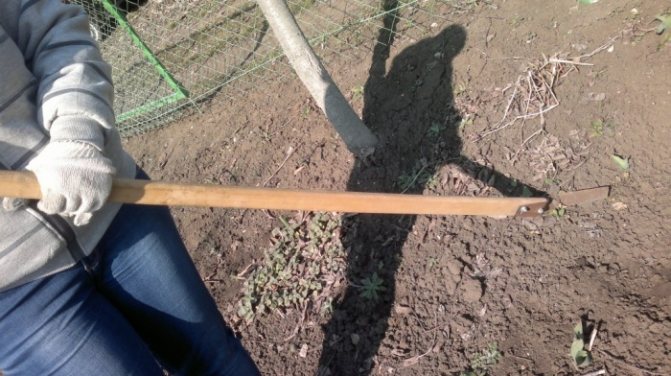

Advice! In addition, you can level the bed, break up clods, shape edges, and create seed furrows.
Removing weeds
Weed removal is another major activity. The good news is that it does not matter at all for work where the weeds grow and how strong their root system is. The flat cutter will quickly, efficiently, and effortlessly cut any plant. In this case, the principle of operation is exactly the same as in the first case. Only now the depth is changing. It is necessary to cut a layer of soil of 1–2 cm. The work of the tool is so effective that it cuts off those weeds that have not yet sprouted. It is noteworthy that it is unnecessary to remove weeds. Beetles and worms will process them in the blink of an eye, making good fertilizer for the garden.
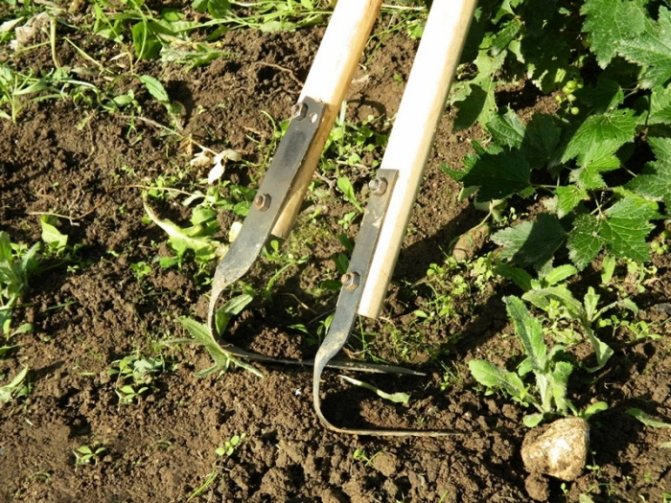

Note! Fokin's plane cutter will quickly cope even with perennial sod. The grass is easy to remove without any titanic work.
Flat cutter like a scythe rake and pitchfork
You can work with a tool not only in the garden, but also in the garden. Do you know how to hold a scythe? Likewise, grab your plane cutter and begin to perform the same movements as the oblique. It will quickly and easily cut grass above the ground. Only you need to sharpen it well. Now, unfold the tool 90 and take it like a rake. Thanks to one wide tooth, you can not only stir the hay, but also rake it in a pile. It is clear that it will not work perfectly to make the order, but as an option it will do. But when you need to clean up in a stall, the Plane Cutter is perfect for the task. You will be able to scrub the floor so that there is no dirt on it.
Where did this wonderful invention come from?
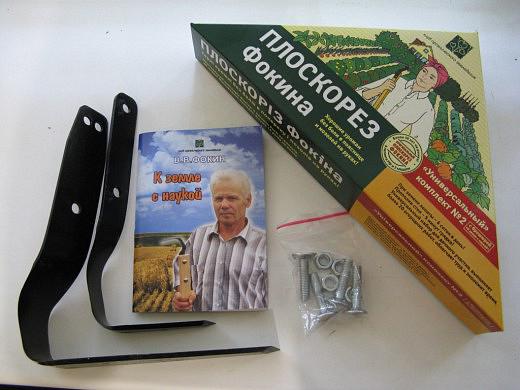

The Russian engineer V. Fokin was very fond of spending time working with the land. Even then, he was thinking about the huge number of gardening devices and their essence. The thoughts of simplifying the hard earthwork did not leave him.
An engineer-inventor suffered a heart attack. Then his favorite occupation became practically inaccessible work for him. However, the technical mentality did not allow him to simply surrender to his ailments, and soon his invention was born, which was later named "Fokin's plane cutter". Its application became possible for everyone. In the skillful hands of many summer residents, he turned into a multifunctional and irreplaceable assistant.
Technology
And finally, it's time to decide how to sharpen the Fokin plane cutter correctly.
Some craftsmen recommend immersing the blade in salt water for 15–20 minutes before sharpening.
But even if you do not do this, then first you need to wash the tool so that there are no particles of earth or plant residues on it, and you can start sharpening.
To do the job correctly, it is important to consider the blade and decide which part you need to sharpen.
The plane cutter can be conditionally divided into three working areas:
- the longest part is the main cutting surface;
- the nose, which becomes dull most often and fastest;
- rounded part, which is the transition from the main cutting surface to the holder.
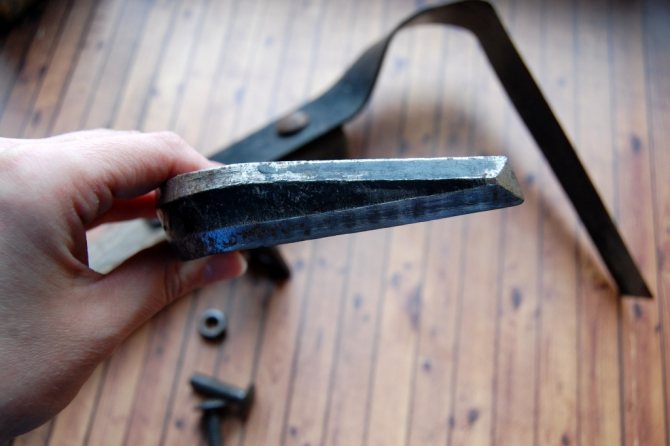

The working parts of the plane cutter
Before starting work, it is important to remember that:
- The plane cutter should not overheat.
- The chamfer is sharpened, not the back of the blade.
- The correct chamfer bevel should be maintained, it should be at least 40 ° and not more than 45 °.
The benchmark is the factory sharpening, it must be carefully considered before using the tool and subsequently strive to keep it in the same condition.
The technology is quite simple:
- It is necessary to start by sharpening the tip, observing the requirements for the angle. With the selected tool, for example, a bar, it is necessary to grind the chamfer.If sharpening is carried out on an emery wheel, then in this case it is important not to press down on the blade with force.
- Next, we move on to the main long part and work in the same way with the chamfer, remembering 45 °. Only remove the burrs from the front surface of the blade. This can be done with an emery or a file.
- Gardeners are often interested in whether it is necessary to sharpen the rounded part. Of course, it is necessary, especially if it is actively used in work. It can be passed with sandpaper. The rules are the same: keep the angle and only work with the chamfer, not the surface of the blade.
The tool is now ready for use. The main thing is not to start it and carry out maintenance on time.
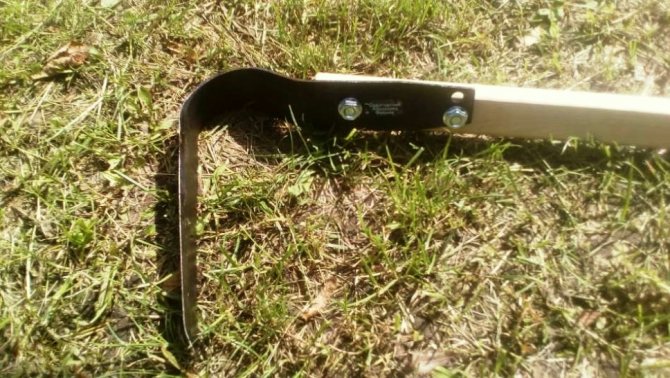

Flat cutter after sharpening
Flat cutter device
Before considering how to work correctly with a Fokin flat cutter, you need to understand his device. This will allow you to understand its strengths and demonstrate its usability.
Outwardly, the tool resembles a flat stick to which a hooked metal plate is bolted to it. It is bent several times at certain angles, which allows for carving work.
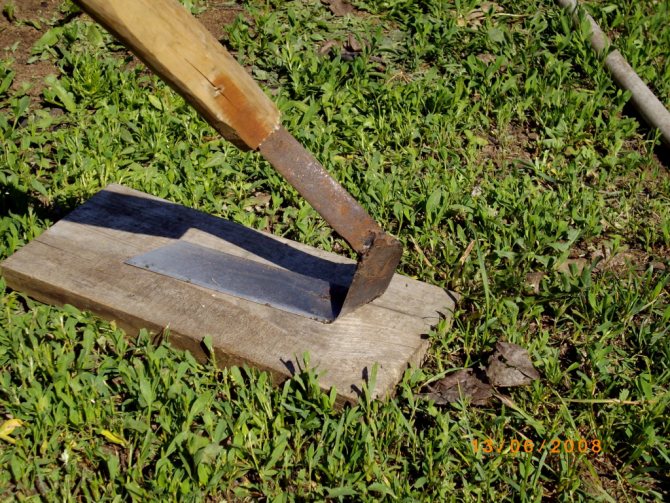

The fasteners are designed in such a way that each person can make their own product, taking into account their physical condition. Two main plane cutters, and their difference is only in size: large and small. There are also several other flat cutters designed for different types of activities. A large tool is for working the soil, and a small one is needed for small work.
Present the flat cutter has a black handle, the metal is treated against corrosion and sharpened according to a specific technology that allows the product to work for a long time without losing its basic properties. The handle is rectangular, which allows you to work with your hands without getting corns and serious physical costs.
The original product is stamped and comes in a triangular package. Inside are bolts, nuts, and a brochure showing how to use the Fokine Plane Cutter. Its author is the creator of the product.

